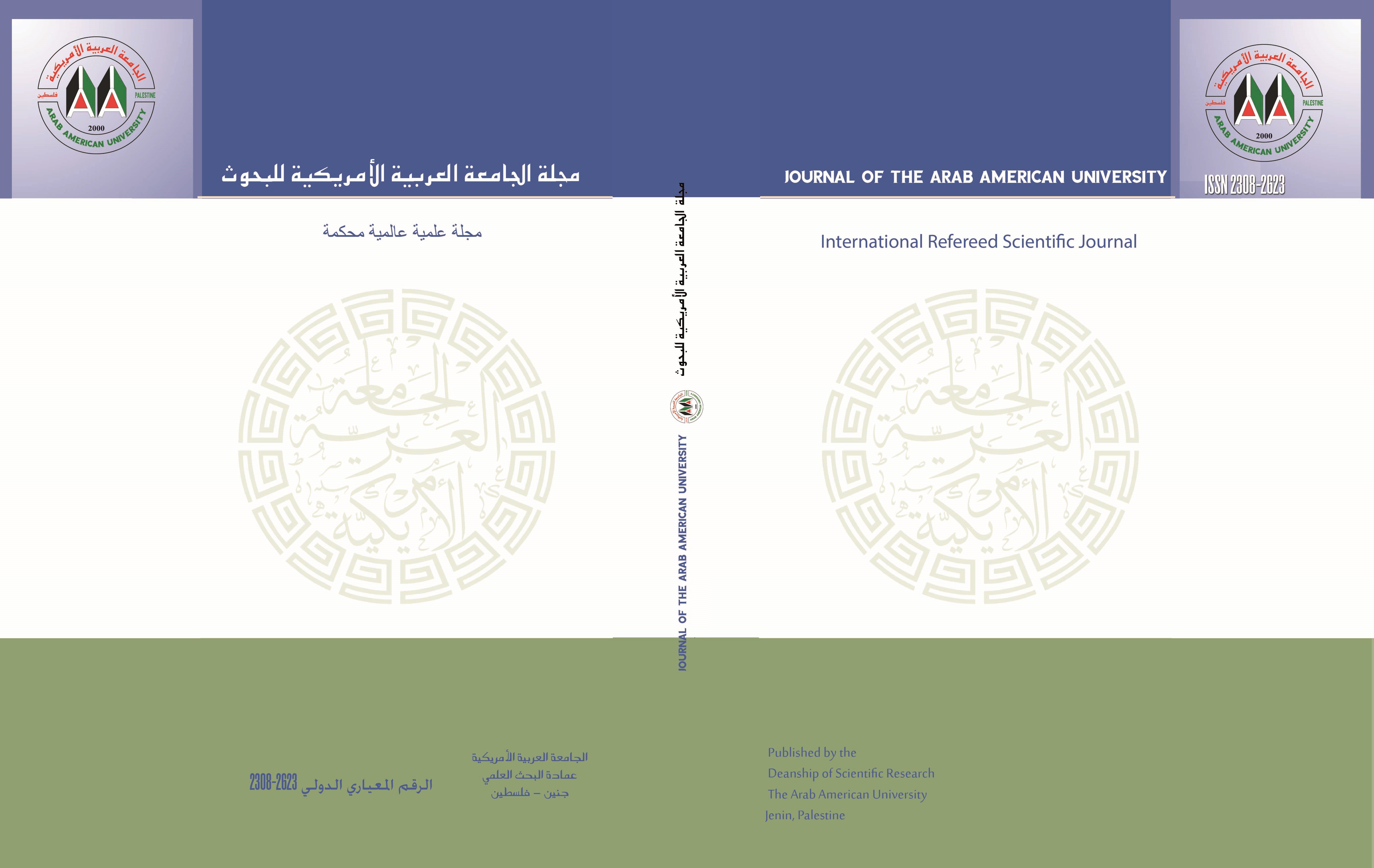Journal of the Arab American University مجلة الجامعة العربية الامريكية للبحوث

Development indicators of health services using Geographical Information Systems in Beit Lahia, Gaza
Abstract
The study aimed to identify the health services and contribute to solving their problems in Beit Lahia, Gaza in light of urban indicators in terms of quantity, type and the efficiency and effectiveness of spatial distribution. To achieve this, the population of the study was studied in terms of its size, growth and sustainable development of health services. The results showed that the population was growing at a high rate as it multiplied about 25, 8 times in an estimated period of (50) years with poor health services. That is, the health services constituted 0,06% of the total concern as it was found that there were defects and shortcomings in the health services in terms of quantity, quality and distribution. For example, doctors’ indicator showed (13) doctors were assigned for (10,000) people, the nurse indicator showed that (14) nurses were assigned for (10,000) people, the beds indicator showed that (17) beds were allocated for (10,000) people and the centers' locations indicator showed that (0,079) of these locations were joint and combined based on the geographical proximity factor. Also, the spatial coverage of services did not include all of the city's neighborhoods. Therefore, the policy of cluster dispersal was adopted to remedy the defects in health services location. Then, the future needs of health staff were estimated until the end of the planning period in 2030, where the city needs (174) doctors, (611) nurses, (489) beds. The study recommended the necessity of doing an urban observatory of the city in order to benefit from the urban indicators, and work to develop health services and distribute them to serve the whole population.
Recommended Citation
Abu Amra, Saleh
(2022)
"Development indicators of health services using Geographical Information Systems in Beit Lahia, Gaza,"
Journal of the Arab American University مجلة الجامعة العربية الامريكية للبحوث: Vol. 8:
Iss.
2, Article 5.
Available at:
https://digitalcommons.aaru.edu.jo/aaup/vol8/iss2/5

